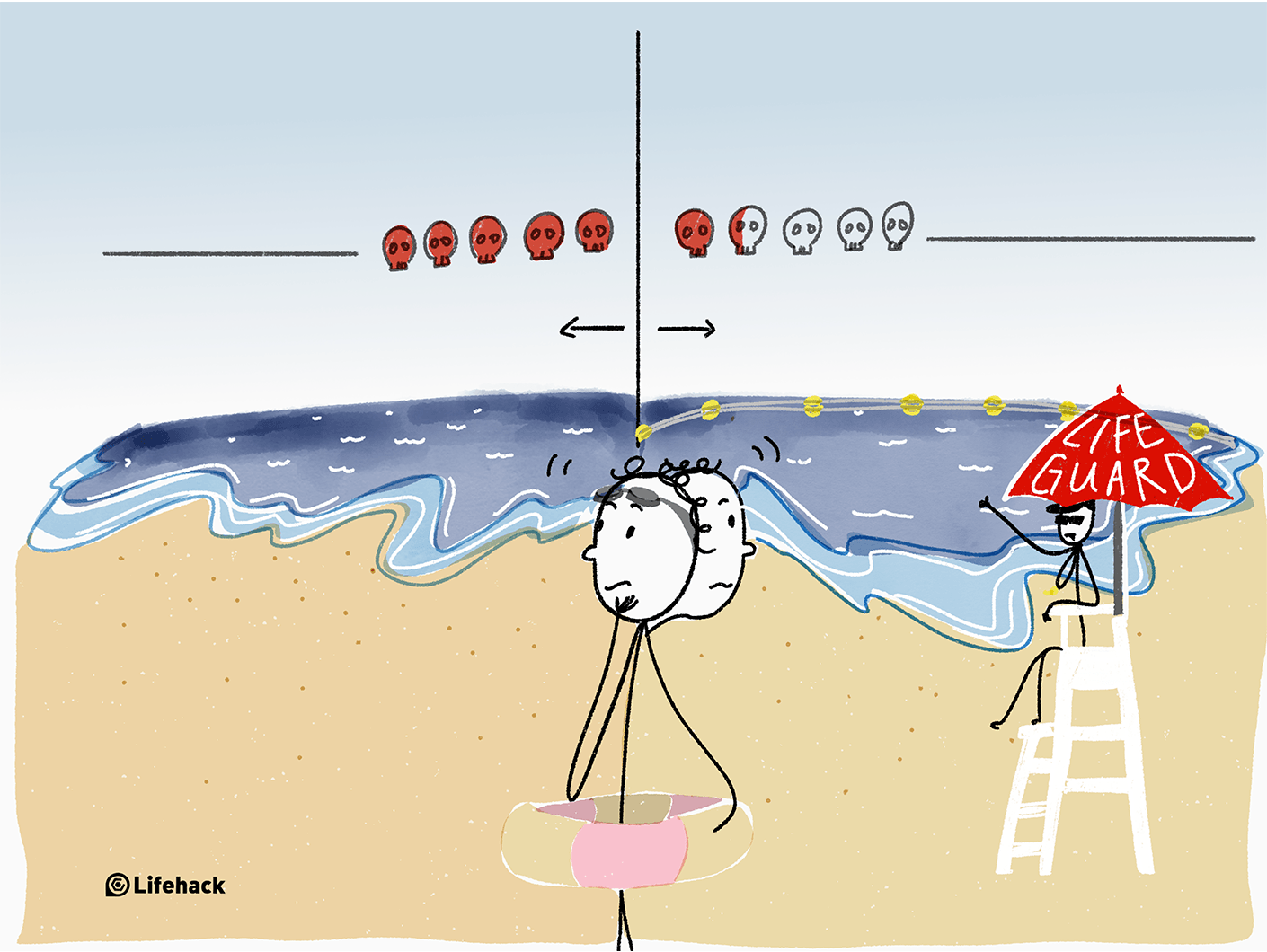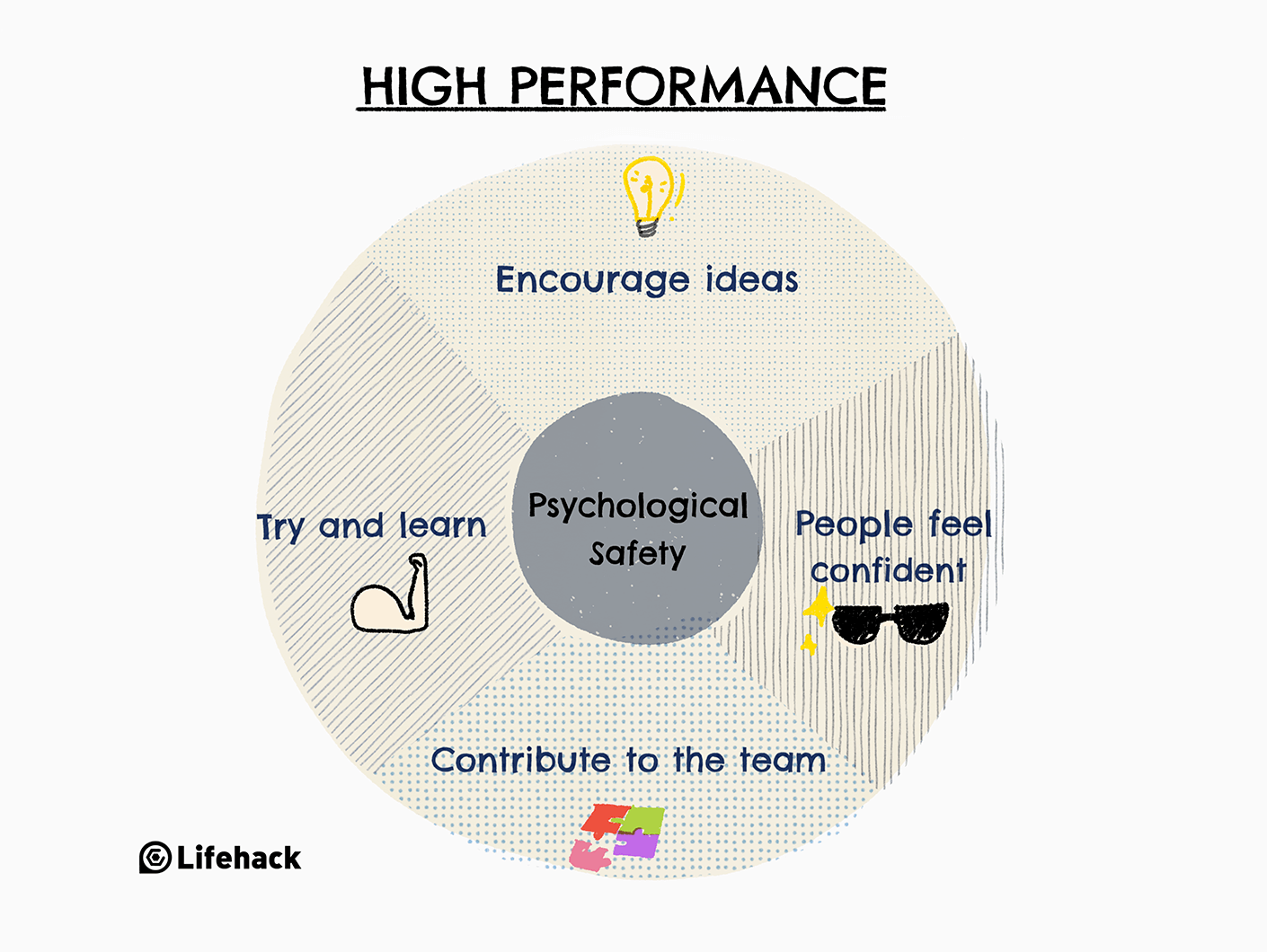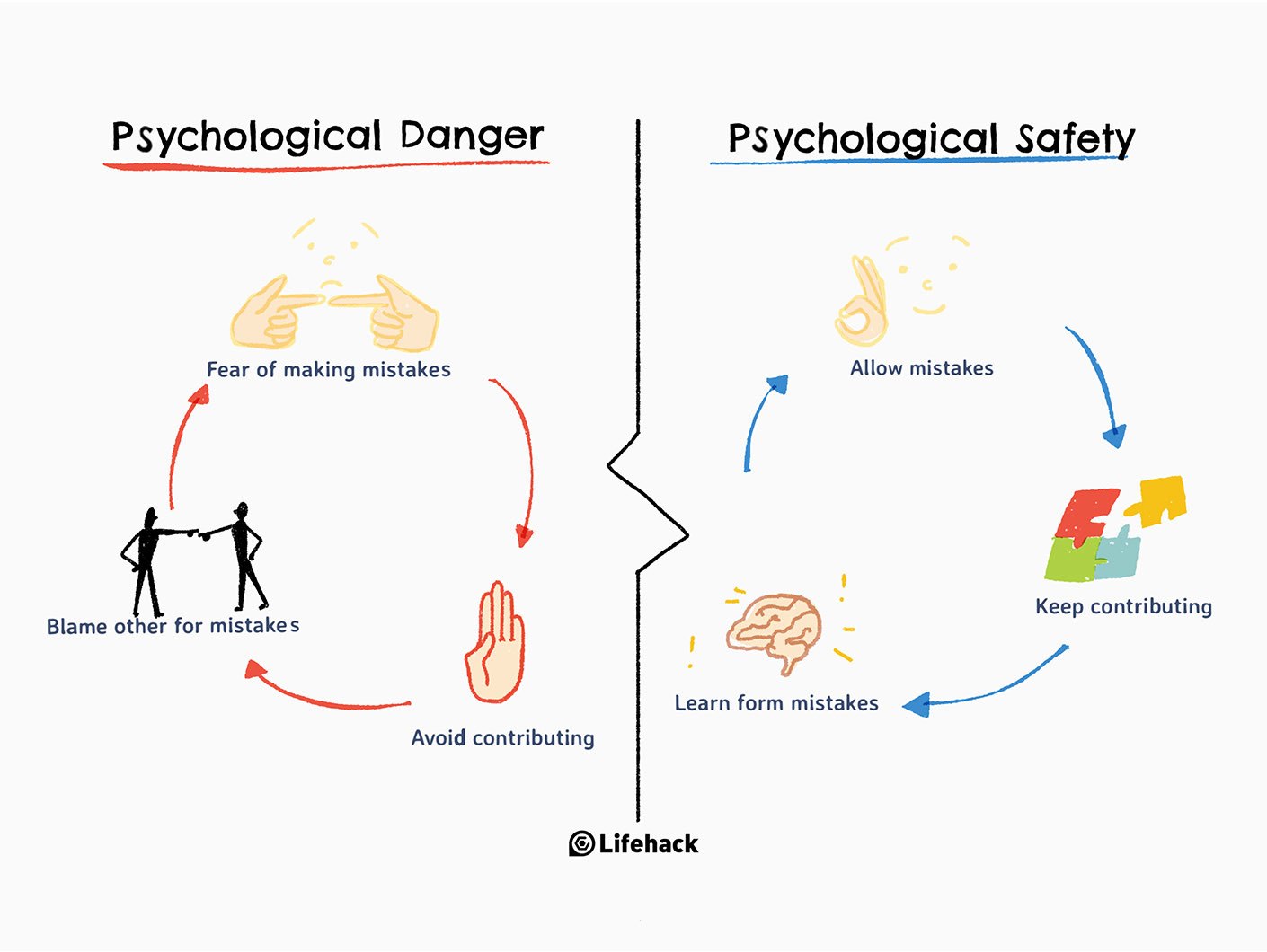As a maiden sea swimmer – which one would you choose? Well, although you possess the necessary swimming skills, clearly, you wouldn’t choose option 1. Why? Because you wouldn’t feel safe wading into the sea knowing that there’d be no nets or lifeguards to help you if you got into trouble. Option 2 would be the obvious and sensible choice. The same principle as the above applies to working in a team. You have your skills – and your team members have theirs. But these skills will only be brought to the fore if you and your team members feel safe to explore your individual potential within the team environment. Let’s see how this works.
We all want a safe playground
Tech giant Google spent two years studying 180 teams and found that one of the most important traits of an effective team was psychological safety. Psychological safety is a shared belief held by members of a team that the team space is safe for interpersonal risk-taking.[1]
Google’s in-depth study, named Project Aristotle, was designed to discover why some teams failed and others succeeded. Prior to the study, Google executives believed that winning teams were made up of the best and most talented people. However, the results of the study showed something radically different. Here are the five key characteristics of successful teams (as determined by the Google study): Out of the five characteristics, the fifth one stood out, as researchers hadn’t anticipated this being a vital aspect of successful teams. Project Aristotle showed that teams with psychologically-safe environments had employees who were more likely to stay, more likely to harness the power of diversity, and ultimately – were more successful![2]
With safety comes freedom
Psychological safety gives team members the freedom to fail without repercussions, while at the same time respecting and questioning different opinions. Psychological safety is also rooted in the fact that team members aren’t trying to undermine each other. I’m sure you’ve worked in teams where just a couple of loud, dominant people do all the talking – and make all the decisions. This type of team atmosphere is the opposite of the one fostered by psychological safety. In the latter model, people feel safe enough around one another to keep pitching new opinions, ideas and goals. Instead of a few people taking charge of a team’s direction, a team that has created a psychological safe space allows each team member to contribute fairly and evenly. Team members feel comfortable being honest with each other, and happily express their ideas and welcome feedback on them – rather than being worried that their ideas will be shot down in flames. Teams with psychological safety are completely different to what you might have experienced before. Everyone feels like they can speak up, and members can show they are sensitive to how one another feels. There’s no competition between team members, as the team’s achievements are the main focus at all times. The opposite of psychological safety is psychological danger. And as I’ve touched on, the latter has a negative impact on a team’s effectiveness, as well as proving to be demoralizing for the team members.
As the above image clearly shows, psychological danger creates a cycle of negativity – resulting in the closing down of ideas and opinions from most of the team members. In contrast, psychological safety encourages openness and freedom of expression. In turn, these lead to the team (and its members) being able to learn from failures, adapt to changes, and to become better innovators and decision-makers. At this stage, you may be wondering, how does a team move from an environment of psychological danger to psychological safety?
The safety starts with the team leader
Team leaders should model the correct behaviors by:
Not cutting-off team members’ conversations. Demonstrating that they’re listening by recapping what people say. Encouraging all team members to speak their ideas – including their frustrations. Responding at all times in a nonjudgmental way. (Because judgmental responses discourage people from speaking up.)
To give you an example of these traits in action, picture yourself in this scenario… You’re the manager of a small team of IT support staff. Until now, your management style has been to tell people what to do. (On the basis that only you know what’s best for the team!) Your top-down, authoritative approach effectively led to your team members feeling uncomfortable about suggesting ideas. They worried that you would say (in front of the rest of the team) that their ideas were irrational, stupid or even worthless. However, by adopting the psychological safety approach, you would not give a thumb down to ideas and suggestions, but instead, would consider how the ideas could be used to boost your team’s success. You may have to ask more questions to get a full picture of the ideas that team members have. But, for sure, in many cases there will be great ideas that can be adopted. And as history shows, in many cases, major achievements come from seemingly minor and random ideas.
When people feel safe to speak up, they become a winning team
When the team member’s voices are smothered, the power of the team is significantly diminished. It’s only by allowing a free flow of ideas and suggestions that genuine progress towards goals can be made. For example, consider a young, up-and-coming pop band. Most of their music and lyrics are written by their talented and super-assured frontman. However, their introverted keyboard player has come up with a melody that is incredibly catchy. If the band were dominated by their frontman, the keyboard player could be reluctant to pitch his idea to the band. But if the band operated under the psychological safety framework, then the keyboard player would be happy to share his melody with his fellow band members. And here’s the interesting part. The keyboard player’s melody could be turned into a full song by the rest of the band – and if the stars aligned – it could be their first No. 1 hit! Winning teams are open teams, where each member enjoys playing their part. No ideas or suggestions are off limits. And within this powerful safe space, effective and progressive teams can chart their unique path to the top. So, if your team is currently in the danger zone, put the tips in this article into action – and start turning your team into a positive, unstoppable force.



